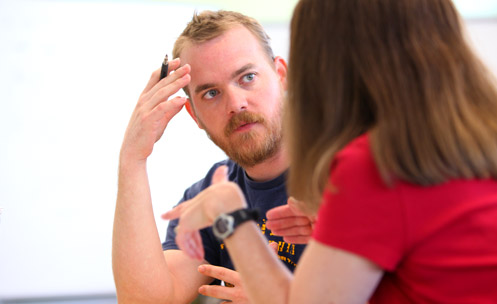Whether you’re interested in an associate’s degree, a certificate in your field, transferring to a four-year university, or you just want to take some classes for your own personal satisfaction, Mesa Community College has a program to suit your career goals.
Not Sure What You Want to Study?
You can discover majors and in-demand careers based on your interests by using Career Coach. Career Coach offers quick career assessments to help you find what you want in a future job, which can help guide your educational journey.
Fields of Interest
Maricopa Community Colleges has organized the following Fields of Interest to help you clarify which career path you are interested in pursuing. Simply select a Field of Interest to explore the degree and certificate options available in your chosen field. Every Field of Interest represents a community of students, faculty, and staff who will give you the information, assistance, and encouragement you need to find success.

















